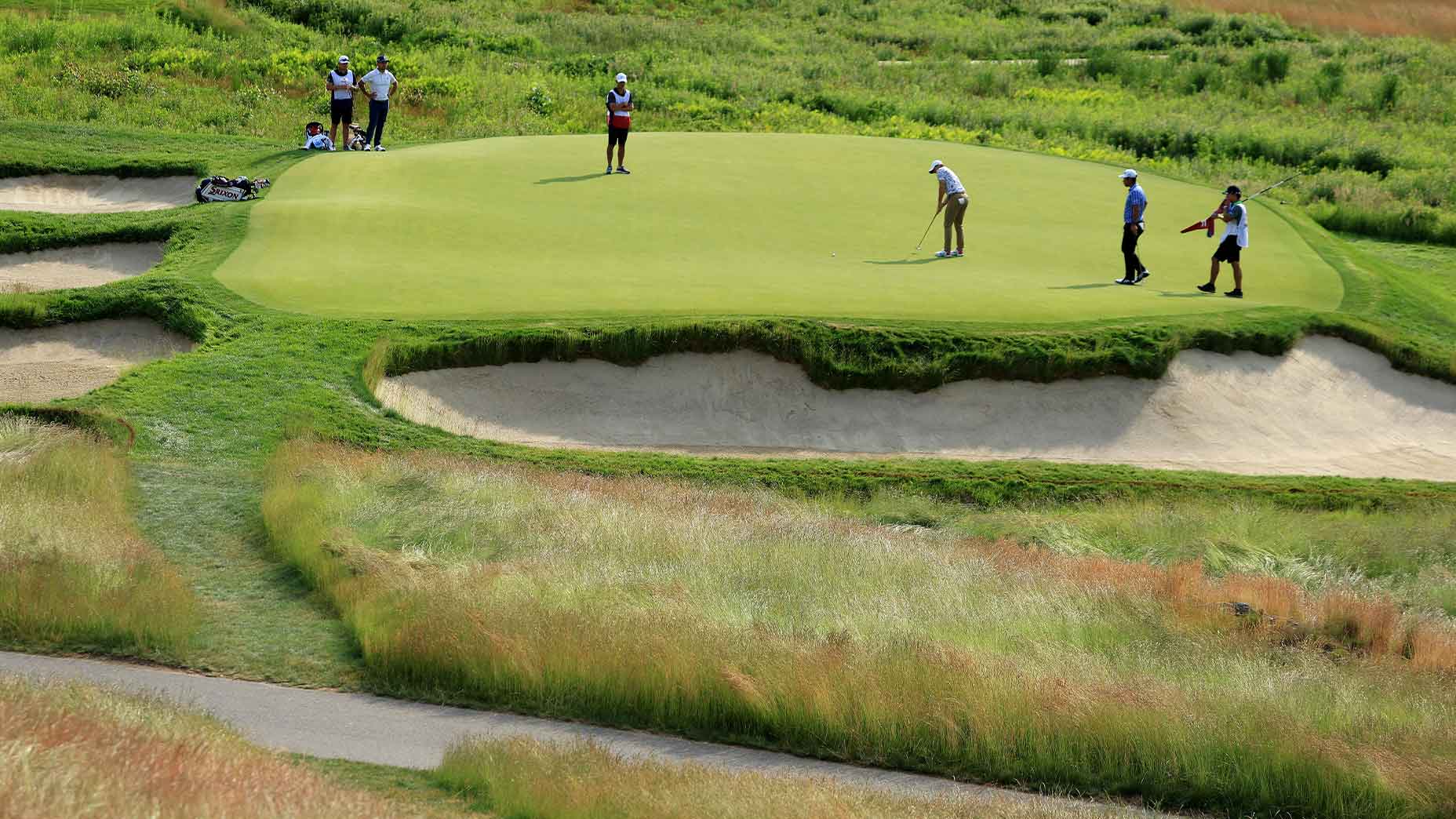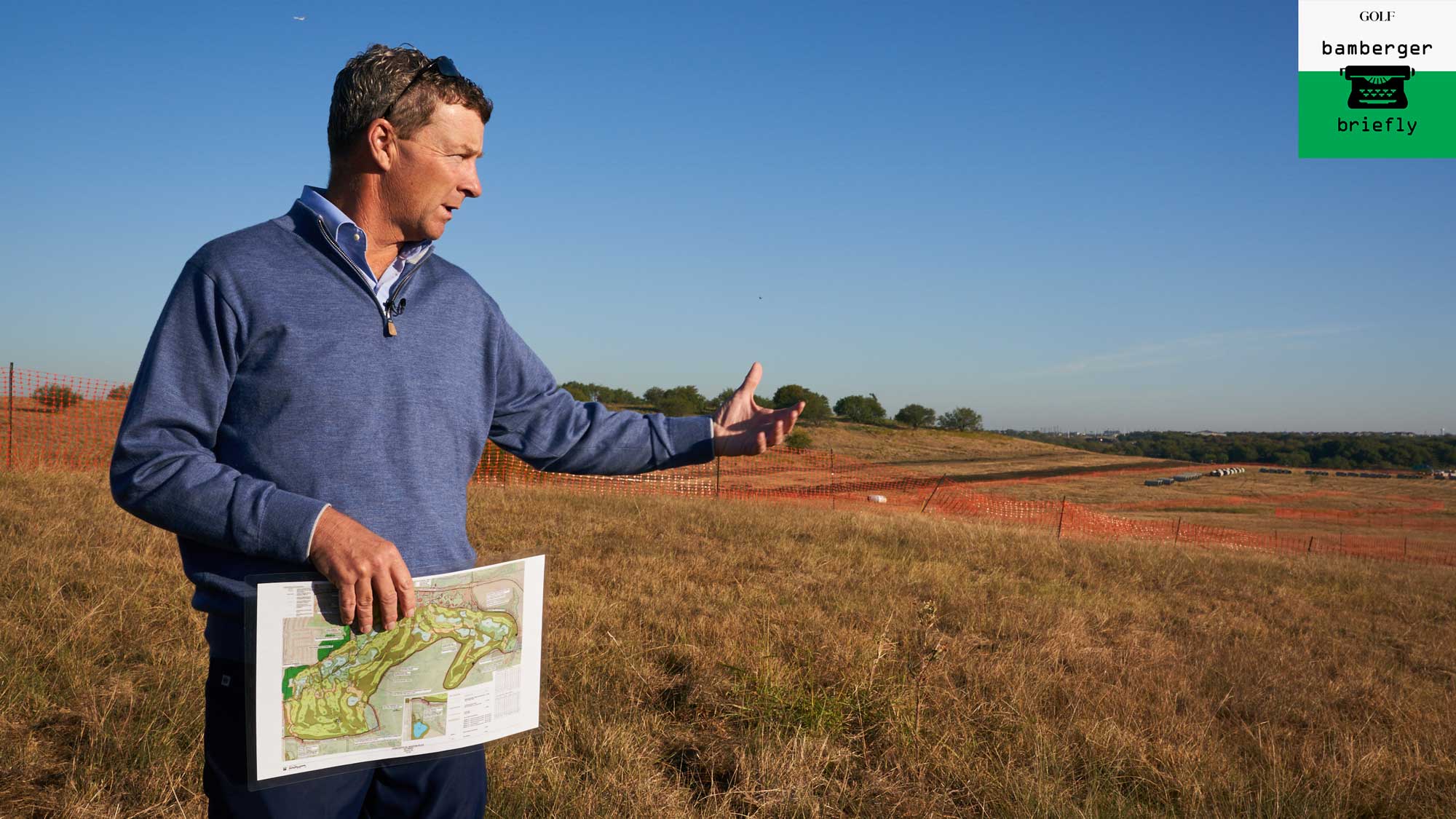Stewart Cink shot a 7-under 64 on Thursday to take a three-stroke lead after the first round of the Charles Schwab Cup Championship.
The U.S. Open’s best hole is also its tiniest — and most devilish


The 11th hole at the U.S. Open is turning heads.
Getty Images
BROOKLINE, Mass. — The 11th is unquestionably a U.S. Open must-see. If you can see it.
On Saturday at The Country Club, the crowds arrived early — well before the 3:46 p.m. final pairing. They arrived loudly, forgetting that Saturday mornings are tepid, even sleepy at most golf tournaments. And they arrived, it appeared, to see No. 11.
This was good news for the marshals located around No. 11, particularly those who have noticed that the hole is a natural amphitheater perfect for creating U.S. Open roars. It was bad news for most everyone else. By noon, the grandstand adjacent to the 11th green felt like that one scene in “Forrest Gump.”
“This seat’s taken, sorry.”
“Nah, someone’s sitting here.”
If you did manage to find a seat, you didn’t dare leave. You’d just earned yourself a prime view of the best hole at the U.S. Open, and on Saturday, that was precious real estate.
The pipsqueak par-3 has been a topic of particular interest through the early portion of play at this week’s national championship. It returned to the U.S. Open rotation in 2022 for the first time since 1913, which means the last U.S. Open champion to master it was Francis Ouimet.
TCC owns 27 holes worth of property here at Brookline, which means it has the luxury of picking only the best 18 holes for its championship routing. For years, No. 11 didn’t make the cut. The hole was short — too short, some said — but more problematically, it was bland. Decades of play had worn down its teeth. What used to be a large, sloping green was now a tiny, level postage stamp rimmed with rough.
In the mid-2010s, The Country Club decided it was high time to host a U.S. Open again, and hired Gil Hanse to restore the course to its original glory. No. 11, they told him, was a hole of particular interest. If he could find a way to craft a U.S. Open-caliber hole, it would make the routing simpler for tournament organizers, not to mention easier for players to walk.
Hanse and his partner Jim Wagner got to work expanding and recontouring the green. Their goal was to reintroduce the bunkers, the rough, the penalty area surrounding the green on all sides — to force players to execute a simple shot well. The new hole would be the same length as the old one (just a hair over 130 yards), but it would be undulating and nasty, with a green that deflected off-center tee shots rather than absorbing them. For shots that missed the green altogether, the punishment would be extreme.
When I spoke with Hanse in April, I asked him — biases aside — whether he thought the hole was too easy for a U.S. Open. He chuckled.
“No, I don’t think so.”
After two days at the U.S. Open, it seems he was right. Four holes at TCC have played easier than the 11th, which has yielded just one more birdie (57) than it has bogeys (56). The wind has been swirling, the green has been punishing, and the USGA’s pin positions have been dastardly.
On Saturday, the pin bordered on rude. Officially, it was six paces from the left edge of the green and six from the back. Most played their tee shots safely to the center of the green, happily taking a two-putt par and heading off to the 12th. A ridge just right of the flagstick made hole-high putts from that half of the green too tricky to justify.
Only a few brave souls bothered to hit tee shots within 10 feet of the hole. Two of them — Jordan Spieth and Wil Besseling — played in a pairing together. Besseling had the better of the two tee shots, but his birdie try skipped just past the hole. Spieth, on the other hand, poured his into the heart, and sent the several-thousand Boston faithful in attendance into a tizzy.
In an interesting twist, the “too-easy” 11th has quickly become the U.S. Open’s most compelling hole. On a week in which players are bludgeoned to submission by length, narrow fairways and thick rough, a par-3 reachable for an 8-year-old has stupefied the game’s best. Perhaps 8,000-yard golf courses aren’t the only way to defend against the best players of the modern era.
At Brookline, golf fans are seeing a different kind of U.S. Open challenge. The type in which “hard” and “fair” aren’t necessarily in contrast — even on a 130-yard par-3.
There is, however, one problem for the USGA to consider with the short-but-brilliant 11th: the grandstands aren’t nearly big enough.


